STAR VIBE mission updates
The STAR VIBE mission, which is the product of a collaboration between the Scanway and the German company German Orbital Systems, was launched into orbit on board a Falcon 9 rocket, during the Transporter 6 mission.
The mission is a demonstration mission of two proprietary systems – a small Earth observation telescope called STAR and a system for self-inspection of satellite status called VIBE.
The objective of the mission is to test the STAR telescope and the VIBE technology under space conditions, as well as to raise the level of technological readiness level to the highest, ninth level. To this purpose, the impact of space conditions (vacuum, temperature fluctuations, high radiation and microgravity) on the telescope’s components, on-board electronics and on the quality of the data collected will be tested.
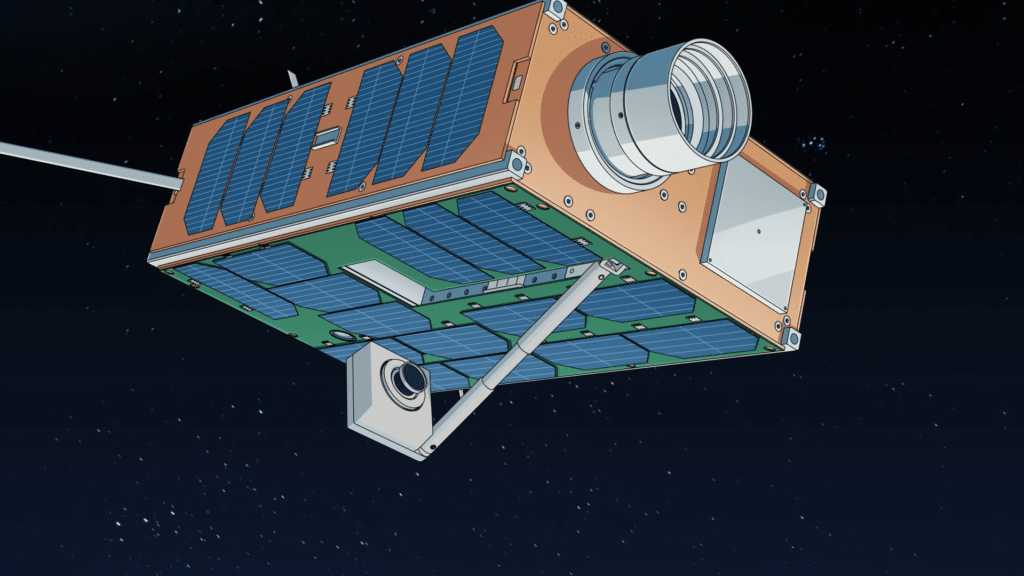
STAR telescope
The STAR telescope is a telescope operating in the visible light spectrum. Its sensor allows images to be taken at a resolution of 25 meters per pixel and provides a large field of view (102.4 x 76.8 km). This allows rapid data collection for many purposes, e.g. on climate change, natural disasters or data supporting efficient agriculture.
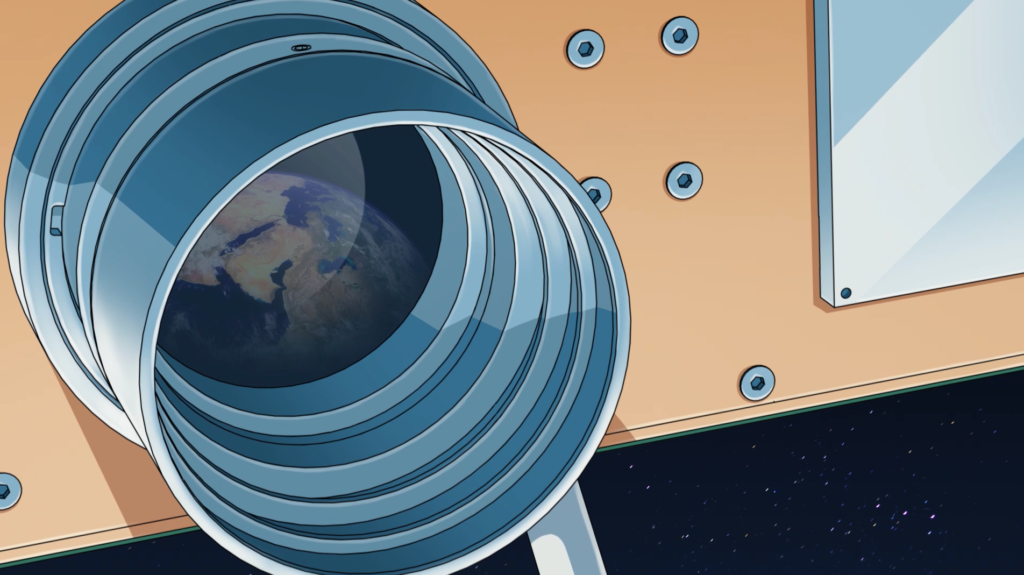
VIBE system
VIBE is an optical system that is one configuration of Scanway’s SHS system – Spacecraft Health Scanner – a system used for autonomous nanosatellite diagnostics. VIBE is a vision system located on a deployable beam. The camera is connected to the spacecraft’s onboard computer, which, by collecting images in its database, allows the data to be analysed by artificial intelligence, which is able to detect various defects, such as damage to the solar panels.
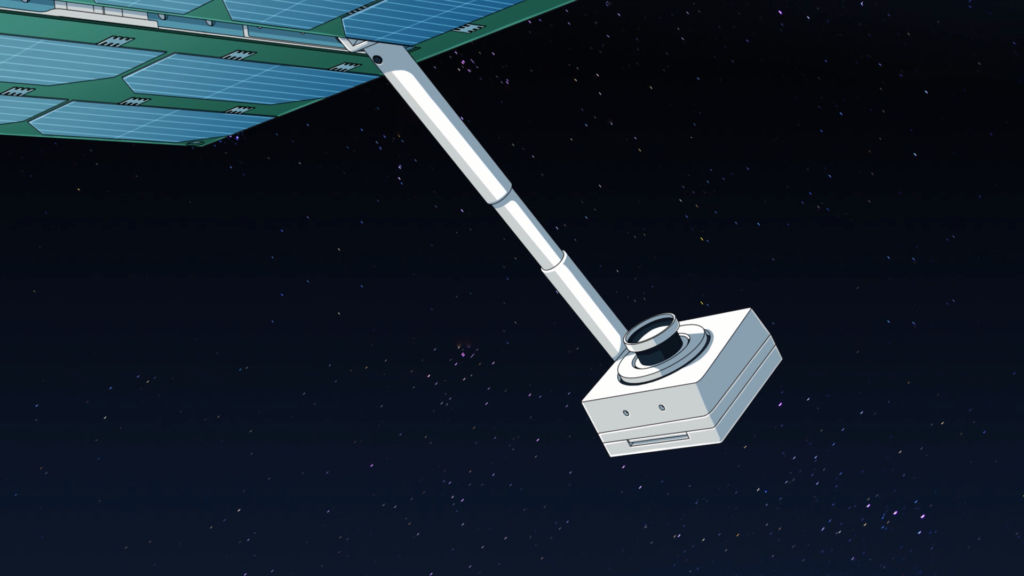
Testing
Prior to the integration of the satellite into the rocket, the STAR and VIBE systems were tested several times to verify correct functionality. The tests were carried out in the company’s laboratory and at an independent scientific institution in Germany; among other things, vibration tests and tests in a thermal vacuum chamber were performed. In addition, Scanway carried out stratospheric balloon tests, in which the test payload (on-board computer, STAR telescope and VIBE system) was hooked up to the balloon’s nacelle and sent to an altitude of about 35 km. Stratospheric testing allows the payload to be tested in conditions of low pressure, low temperature and elevated cosmic radiation, which can very much affect the performance of electronic systems.
Mission value
The STAR VIBE mission is exceptional for the Polish space sector primarily due to the dispatch of the VIBE instrument, which is the first Polish optical instrument for auto-inspection of orbital infrastructure, which is equipped with an algorithm based on artificial intelligence.
Launch (03.01.2023)
The mission was launched into SSO orbit during the Transporter-6 mission on board a Falcon 9 rocket.
2 hours after the deployment (on the second orbit flight) communication with the STAR VIBE satellite was confirmed.
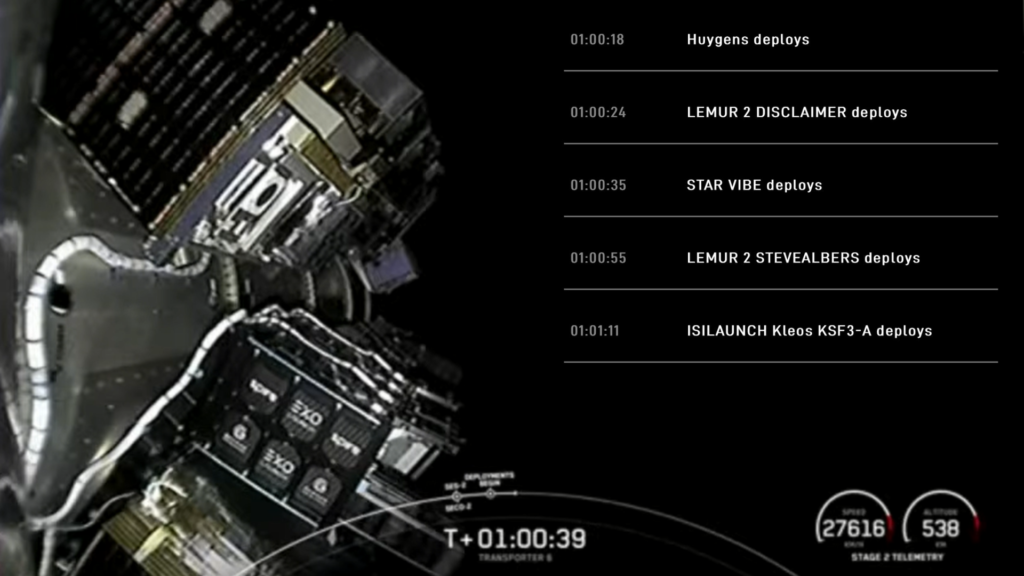
Next mission steps
04/01/2023
STAR and VBE payloads are scheduled to be activated in 3-4 weeks after all systems commissioning is completed.
05/01/2023
STAR VIBE satellite has already made about 28 orbits over our planet and during this time has been repeatedly observed by many ground stations around the world. Our partner German Orbital Systems is correctly receiving the satellite’s telemetry, and we can confirm that the satellite’s most important tasks are being performed in an exemplary manner. Here is about a positive energy balance – the batteries are almost fully charged, the main on-board computer (OBC) has been checked and reports no anomalies. Similarly, the interface electronics with STAR and VIBE charges report full operational readiness.
This doesn’t mean that we will be able to enjoy pictures from orbit any time soon. There is still a lot of work ahead of the satellite and the operations team to launch and calibrate the key system, the satellite’s AOCS, or attitude control system. This component is extremely important because without its fully correct operation, the satellite is unable to determine where it is looking with the telescope, or to stabilize its rotation. Together with a partner from Berlin, we are currently working on getting this system up and running as soon as possible and preparing it for the launch tasks for the STAR and VIBE instruments.
10/01/2023
After receiving information, that OBC and majority of the satellite platform works nominally, we’ve decided to turn on our STAR payload. And guess what? It worked properly! We have got housekeeping data and logs which clearly states, that we are ready to proceed further with commisioning of our instruments.
26/01/2023
We’ve completed the next phase of the satellite operation, and we can proudly announce that both instruments are working properly, we were able to take test images and download them to the receiving station. Our team, after analyzing the received data, determined the full operability of our two cameras and approved the transition to the next phase. There is still a lot of work ahead of the entire STAR VIBE team for the full commissioning, and at the moment the calibration phase of the satellite’s positioning system is underway. This will be followed shortly after by the opening test of the VIBE instrument.
21/02/2023
Together with our partner GOS, we have already completed most of the activities related to the launch of the satellite’s platform and instruments. We have already performed three Earth imaging sessions with the STAR instrument, which resulted in test and calibration images, and conducted full tests of the VIBE instrument. Only calibration of the positioning system remains on our list. This system will provide us with excellent quality images, capturing exactly the areas of our planet we want to target during the STAR VIBE mission.
Due to the importance of this functionality of the satellite, together with the GOS, we decided to spend a little more time on this than we had originally planned. Thus, the launch part will take us another two weeks or so, after which we will proceed to the substantive part, i.e. the demonstration of our instruments’ capabilities. So please arm yourself with a little more patience before we start publishing views from orbit.
At the same time, we can assure you that STAR VIBE is doing very well. The satellite is in constant contact with us, the batteries are recharging, and the STAR and VIBE instruments can’t wait for us to publish what amazing views they experience every day.
01/03/2023
The beginning of STAR instrument test campaigns. In order to calibrate the instrument, several imaging sessions were carried out in such global locations as Western Europe, Australia, the Arafura Sea near Papua New Guinea, Iran and Turkmenistan, Italy and Poland. These locations were chosen not at random, but for their terrain diversity. The purpose was to learn telescope operations, especially exposure time.
An important thing is that the images obtained in these campaigns have a lower resolution than anticipated (25 m/pixel) for several reasons:
- The satellite is not yet positioned and calibrated, so the images are taken at different angles from nadir (the perpendicular position looking at the Earth’s surface).
- The images are transmitted via UHF, due to the stage of the mission on the platform provider’s side, for now we do not have access to high-speed S-band.
One of the images from test campaigns below, and more images HERE.
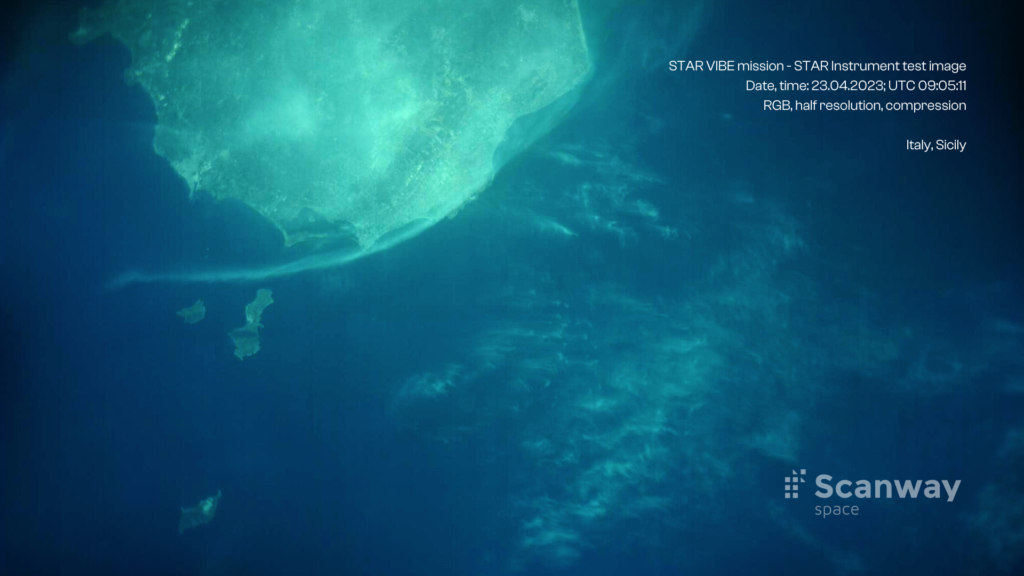
25/09/2023
With the final calibration of the position control system, we are able to target the antennas very accurately, allowing for fast S-band (2.3 GHz) transmission. The result is full-color, full-resolution images, which we are pleased to show publicly for the first time. For comparison, we have added an extract of compressed images previously downloaded in the UHF band (437 MHz). There is a difference – admit it yourself!
Previously, it took us several communication sessions to transmit one photo compressed more than 90 times. Now, in one session, we transmit all compressed miniatures or one raw (RAW) photo.
The photo we are sharing today is of the western regions of Lower Silesia, Poland. We can see the copper basin, the Żelazny Most tailings pond, the Legnica agglomeration and the Sudeten Mountains Foothills. The photo is a mosaic of three images, which we subjected to basic radiometric correction (color correction).
We are currently refining our radiometric model so that we will be able to better select sensor and imaging settings. This will result in images with minimized noise, greater color depth and the ability to bring out more detail of our beautiful Planet.
More images HERE.
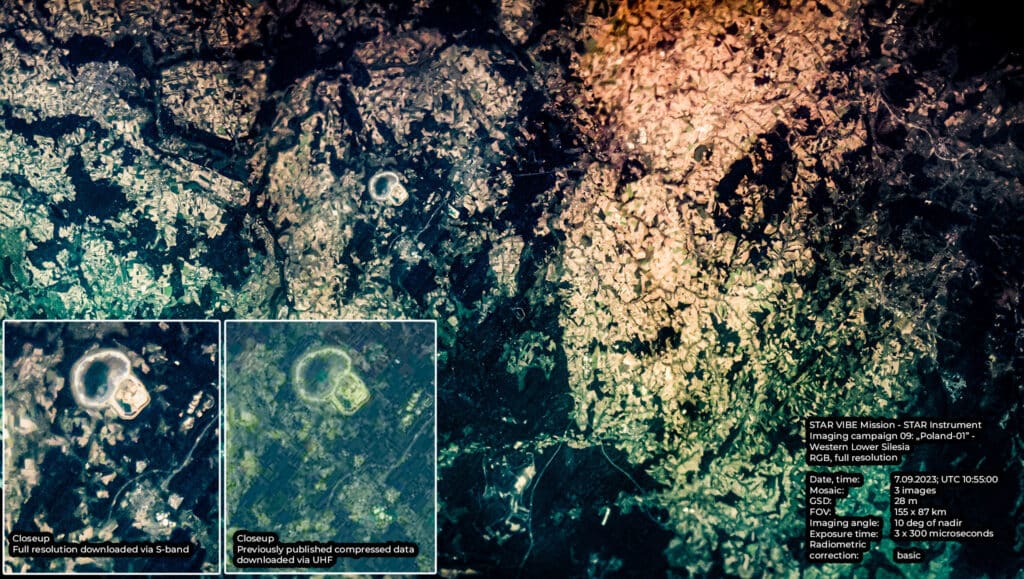
Stay tuned for more updates!
If you have any questions or comments, please feel free to contact us via [email protected]

